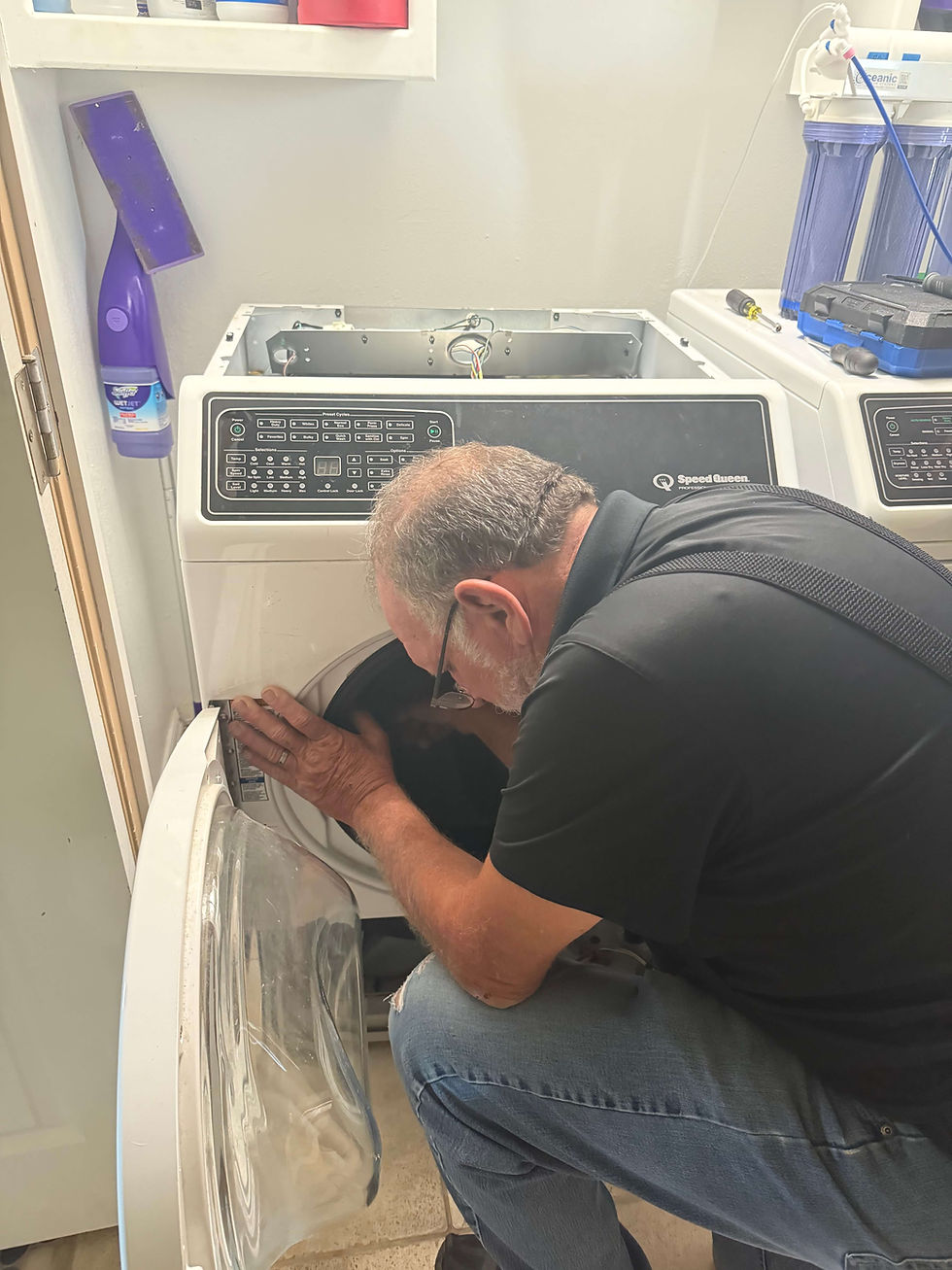Is Your Dishwasher Really Clean? The Hidden Grime You Need to Tackle
- Max Seefluth
- Jul 31
- 3 min read

You rely on it every day to make your life easier. Your dishwasher is the unsung hero of the
kitchen, taking on greasy plates, leftover food, and coffee-stained mugs. But have you ever stopped to ask: who cleans the cleaner?
If you've ever pulled out a "clean" dish that felt gritty, smelled a little funky, or was still dotted with mysterious specks, the problem might not be your detergent. It's likely your dishwasher itself is crying out for a deep clean.
As Tulsa's local appliance repair experts, we've seen inside countless dishwashers, and we know the hidden spots where grime loves to build up. Here's what you need to know to get your machine and dishes sparkling clean again.
The Telltale Signs of a Dirty Dishwasher
Your dishwasher will usually give you a few hints that it needs attention. Keep an eye (and nose) out for these warning signs:
Unpleasant Odors: A persistent sour or musty smell is the number one sign that trapped food particles and bacteria are having a party in your machine.
A Gritty Film on Dishes: This is often a combination of hard water minerals (a common issue here in Oklahoma), undissolved detergent, and food residue being sprayed back into your dishes.
Visible Gunk in the Filter: If you can see debris in the filter at the bottom of the tub, it's definitely time for a clean.
Poor Cleaning Performance: Are your dishes just not getting as clean as they used to? Clogged spray arms could be the culprit.
Slow Draining: Leftover water at the bottom of the tub after a cycle points to a clog in the filter or drain hose.
Your Step-By-Step Guide to a Sparkling Clean Dishwasher
Ready to tackle the grime? It's easier than you think. Set aside about 20 minutes for the hands-on part, plus the time for running two empty cycles.
What You'll Need:
White Vinegar
Baking Soda
A soft cloth or sponge
A toothpick or small piece of wire

Step 1: Empty the Dishwasher & Clean the Filter
First, remove the bottom rack to get easy access to the floor of the dishwasher. Locate the filter, which can usually be found as a cylindrical piece that you can twist and pull out. Some models may also have a flat mesh screen.
Action: Take the filter(s) to the sink and rinse them thoroughly under hot running water. Use a sot brush to gently scrub away any stubborn gunk. Do not use a wire brush, as it can damage the mesh.
Step 2: Inspect and Unclog the Spray Arms
The spray arms are what shoot water onto your dishes. Their tiny holes can easily get clogged with food bits or mineral deposits.
Action: Check the holes on both the top and bottom spray arms. If you see any blockages, use a toothpick or a small piece of wire to gently poke them clear.
Step 3: The Vinegar Cycle (The Sanitizer)
Vinegar is a fantastic natural cleaner. It breaks down grease, sanitizes, and helps remove hard water mineral buildup.
Action: Place a dishwasher-safe bowl containing one cup of white vinegar on the top rack of your empty dishwasher. Run a full cycle on the hottest cycle available. The vinegar will circulate throughout the machine, cleaning the walls, racks, and plumbing.
Step 4: The Baking Soda Cycle (The Deodorizer)
Now that you've sanitized, it's time to deodorize and remove any lingering stains.
Action: After the vinegar cycle is complete. sprinkle one cup of baking soda across the bottom of the dishwasher tub. Run a short, hot water cycle. This will leave the interior bright and smelling fresh.
Step 5: Wipe Down the Gasket and Door
The rubber seal (gasket) around the door is a prime spot for mold and mildew.
Action: Use a damp cloth or sponge dipped in a little vinegar to carefully wipe down the gasket, the edges of the door, and the detergent dispenser.
When to Call a Professional
A monthly cleaning routine can extend the life of your dishwasher and keep it running efficiently. However, some problems go beyond simple grime. If you've thoroughly cleaned your dishwasher and you're still experiencing issues like:
Water not draining at all
Loud or unusual noises during a cycle
Leaking water
Error codes on the display
... it's time to call in the pros. These can be signs of a failing pump, a faulty heating element, or a more serious clog.
We are here to help in Tulsa. Don't let a malfunctioning appliance disrupt your life. Contact us today for fast, reliable appliance repair! We'll diagnose the problem correctly and get your dishwasher back to doing its job, so you can get back to yours.



Comments